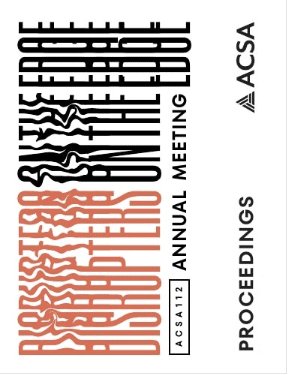Author(s): Nick Safley
Architects create images and representations of buildings to communicate construction and fabrication information. Construction necessitates utilizing mediating technologies to compress and communicate design information about material organization across space and time.1 Successful architectural design images embed material and construction knowledge needed to translate an idea into material. Whether joint lines in hand-drafted elevations imagining stone blocks or walls in a Revit model with embedded construction layers, the images architects produce for building require knowledge of complex material construction cultures and an idea of construction’s aesthetic implication. Images of this sort maintain the professional and disciplinary position of the architect as an organizer of the materials, processes, and labor needed to actualize building in the contingencies of the physical world. Artificial intelligence, especially text-to-image generation platforms, enables the rapid creation of images depicting forms, scenes, and objects with an unprecedented speed and a no-table absence of embedded knowledge from the architect. The rapidly emerging capacity of AI posits a unique and changing role for the architect in the design and construction process. AI allows anyone to generate compelling images with high resolution and photorealism. However, current AI-generated images lack embedded knowledge related to construction, often featuring illogical or impractical material connections or assemblies. This project researches how architects can execute material connections as depicted by undisciplined artificial intelligence and explores how apparent failures or errors in AI-generated material connections can challenge and expand the tectonic boundaries of architectural thinking.
https://doi.org/10.35483/ACSA.AM.112.30
Volume Editors
Germane Barnes & Blair Satterfield
ISBN
978-1-944214-45-6

 Study Architecture
Study Architecture  ProPEL
ProPEL 
